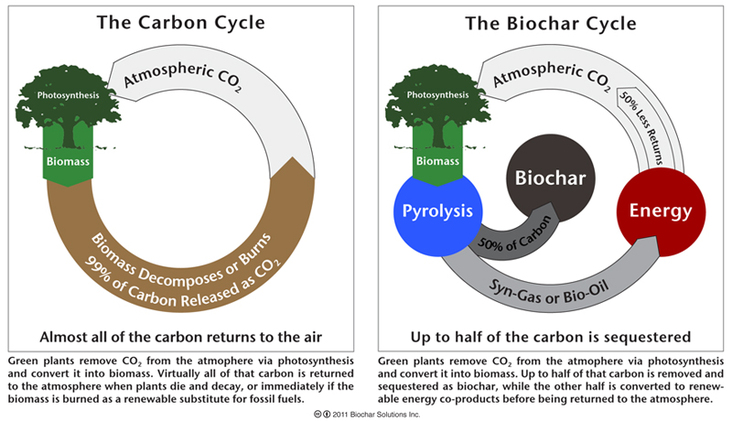 A USDA research team investigating the ancient soil amendment biochar to address food security is suggesting that, with its potential to store one gigaton of carbon per year by 2050, biochar could be a “game changer” in addressing global warming.
A USDA research team investigating the ancient soil amendment biochar to address food security is suggesting that, with its potential to store one gigaton of carbon per year by 2050, biochar could be a “game changer” in addressing global warming.
In field and lab tests using hundreds of varieties of biochar, scientists at South Dakota State University and the University of Minnesota, St. Paul, are studying soil fertility, the stability of biochars in different types of soil, and the levels of carbon different biochars sequester.
Biochar: A solid material obtained from thermochemical conversion of biomass in an oxygen-limited environment. Biochar can be used for a range of applications as an agent for soil improvement, improved resource use efficiency, remediation and/or protection against particular environmental pollution and as an avenue for greenhouse gas (GHG) mitigation. In addition, to be recognized as biochar, the material has to pass a number of material property definitions that relate both to its value (e.g., H/Corg ratios relate to the degree of charring and therefore mineralization in soil) and its safety (e.g., heavy metal content). International Biochar Initiative
“What I usually tell people is that it took humans over 3000 years to fully understand how to activate charcoal for water filtration,” says USDA Scientist Kurt Spokas. “I’m not saying it’s going to take longer than that. Tonight we might have the secret to all these mechanisms. But it’s something that could take time, and it’s important that we don’t prematurely jump on an idea before we have the science to support it.
“The overall conclusion is that biochar is a very intriguing material that has the potential to be a revolutionary or game-changing amendment for the agricultural sector,” says Spokas. “But we’re still early in the game.”
Cornell University Agricultural Science professor and biochar expert Johannes Lehmann maintains that adding biochar to 10 percent of global cropland could sequester the equivalent of 29 billion tons of CO2— an amount which is roughly equivalent to annual human GHG emissions. Both Lehmann and NASA scientist James Hansen stress the need to incorporate sustainable methods for producing biochar.
As Bill McKibben notes, used in a responsible and sustainable manner, biochar could enable us to “run the [climate] movie backwards … to unmine coal and undrill oil.”
With the global biochar industry predicted to expand to close to $6 billion by 2022, biochar is already playing a significant role for small-scale farmers in India, where 60% of farmers live on less than one hectare of land.
Biochar application reduces the burden on farmers in several ways: less fertilizer is needed because biochar absorbs, stores, and slowly releases nutrients to plants; biochar improves soil moisture retention, securing the crops against drought; farmers spend less on seeds as germination rates increase; biochar reduces the methane emissions from paddy fields and farm yard manures; it increases the soil microbes and other soil-life density; it lessens the hardening of soils; it supports better growth of roots and helps in reclaiming degraded soils. Another advantage of biochar is that it can be used in all types of agricultural systems (organic, chemical, permaculture, mixed farming, natural farming, etc). (Ref, Dr. N. Sai Bhaskar Reddy, CEO of Geoecology Energy Organisation. Sustainability of Biochar Systems in Developing Countries)
For background information on biochar, the International Biochar Initiative has a comprehensive FAQ: What is Biochar.
2050kids is launching a project introducing build-it-yourself biochar producing cookstoves in climate challenged communities around the world. Keep up with our progress by following us on Twitter or Facebook.
